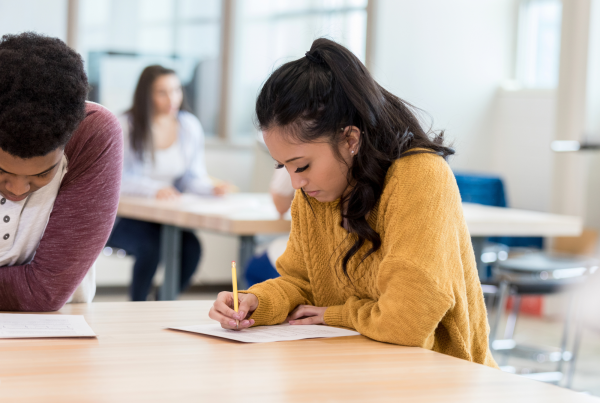For high-school juniors, now is usually the best time to take action on a critical aspect of college applications: letters of recommendation from their teachers! These letters are critical to college admission offices that review applicants holistically. Thoughtful letters of recommendation can help admissions officers understand the characteristics a student will bring to their community of learners. They add another dimension to college applications, providing information that might not otherwise show up in the application. An external observer’s insight into a student’s work ethic, persistence, overall character, passion, and more is valuable for those evaluating student applications.
With that in mind, here are three tips to help students secure letters of recommendation that will help their applications stand out:
Be strategic in choosing recommendation writers.
Some best practices for determining whom to ask for a recommendation include:
- Focus on core academic subjects. Admissions officers use teacher recommendations to evaluate a student’s ability to contribute to and thrive in academic settings, so they generally like to hear from math, science, social studies, English and/or world language teachers.
- Usually, ask junior-year teachers. If a student must stretch back to freshman year to find a teacher who will write a great recommendation, it may give the impression that they haven’t been a star in any of their classes since then.
- Pick teachers who not only like the student, but respect them academically. Students may develop a great relationship with a teacher if they are friendly, funny, helpful or a hard worker. But if they got a low grade in the teacher’s class, they may not have earned their respect academically, and this tends to come across in recommendation letters. A comment like, “Ethan tried really hard, and, finally, he was able to pass the class,” isn’t going to enhance an application.
Be respectful of the high school’s process.
The high school counseling office may communicate about the process of requesting letters. It’s important to follow their instructions, as schools may have different approaches and timelines they like students to follow. For example, some high schools have “brag sheets” students can fill out to help provide a clearer and more complete picture of all that the student is involved in, or to refresh a teacher’s memory about standout moments or accomplishments from class.
In addition, some schools want you to communicate more formally, while others may simply instruct you to catch your teacher before or after class. If you do not hear anything from your high school during April or early May, you can ask the counseling office how to proceed.
It is important for students to remember that teachers are helping them by agreeing to write these letters, and they can show their gratitude by asking for letters nicely, on time, and in accordance with whatever school policies are in place.
Help them share specific details.
At Galin, we tell our students that what distinguishes excellent teacher letters of recommendation from average ones is the level of specificity the letters include and the anecdotes they share. Colleges read lots of letters that describe students as responsible and hard-working, but they read lots fewer that share stories about how students demonstrated those qualities in the classroom. One of the most important things for students to do is to provide reflections for their teachers to remind the teachers of their accomplishments, the skills they gained, and the things they learned that inspired them. If your school doesn’t have a “brag sheet” template, it can be helpful if students provide a summary to help inform the teacher, or ask them, “Is there anything you need from me that will help you write the recommendation letter?”




